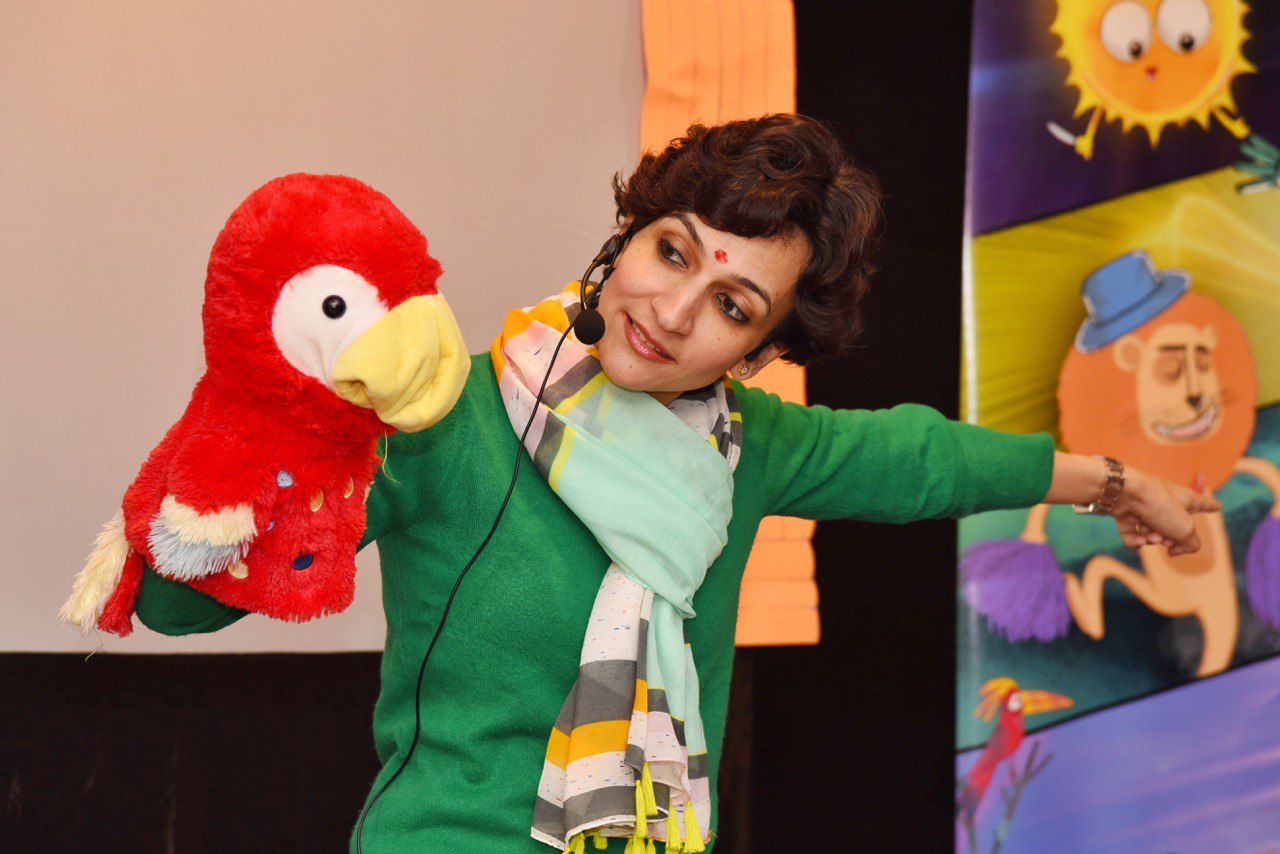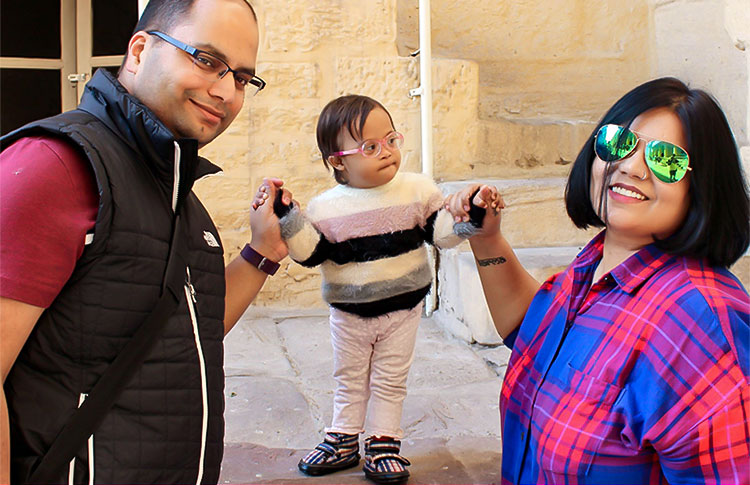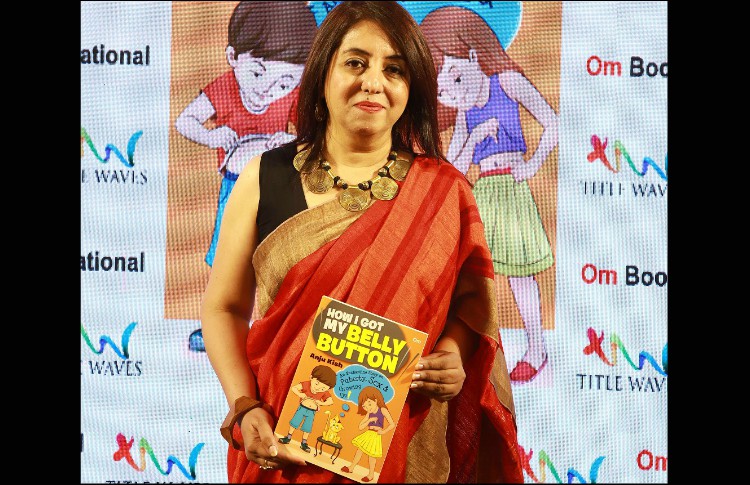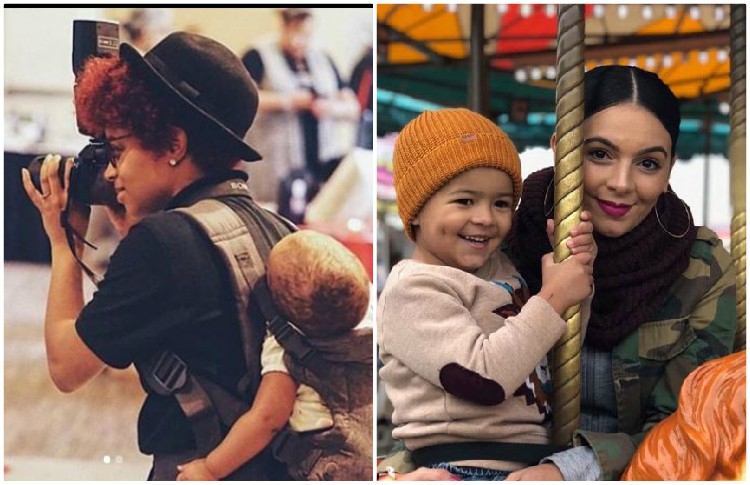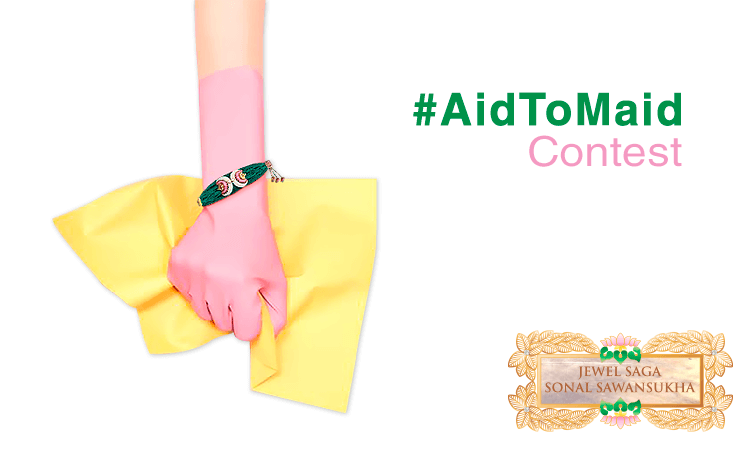Puppeteer Sanika Singh Suggests Stories To Deal With Trauma In Children
- IWB Post
- June 1, 2021

“As a child, there was never a day when I had not heard a kahani,” says renowned storyteller and puppeteer Sanika Singh. As we chatted away on how wonderful the profession of storytelling is, I have to admit I couldn’t miss the sweet baritone of her voice. The expressions were there in casual talk and the earnestness of making story a medium of learning for children couldn’t be undervalued.
Sanika Singh is a part of the team that makes up Tickling Tales. The team creates and narrates stories in different ways, including events, hosting sessions in schools, training programs for teachers and students, and recently through their online app called Droomplanet. The team basically ‘creates stories, crafts them into beautiful books, supports music-based audio stories and presents them to young readers through puppet shows.’ Though all are excellent storytellers, Sanika’s role as a puppeteer is one of the most interesting and interactive.
Sanika has learned the ropes of storytelling and inherited their love primarily from her father, a well-known poet and writer himself. Sanika engages children in Hindi stories and her audiobooks are a delight to listen to on Droomplanet. However, it is her puppets that for sure captivate the hearts of the young ones. Whether it is Scooter, her puppet that is a combination of a snake but makes the vroom-vroom sound of a scooter, or her innovative storytelling style of the ‘paanch puchh ka chuha’, Sanika has a gift to instantly connect with children and engross them in stories. For the social impact that she has managed to create, she has been awarded the Rajasthan Gaurav Award and District Award by the Government of India.
Why are stories so important and how can they impact the lives of children? Why is storytelling through puppets and in Hindi equally essential as through other languages and mediums? Find out as we converse with Sanika in a fun-filled, happy interview, because after all who can complain when we start talking about stories!
How did the love of storytelling and puppeteering emerge? When and why did you decide to take this up as your career?
Sanika: My father was a poet and a lot of his books have been published. So in our childhood, we used to hear stories from him and from my Nani. In my heart, I always knew that someday I would also inspire my kids through stories because a story is the best way to inspire or to teach someone. We ourselves learnt a lot from stories. Also, the love for creativity and to learn something new was always there in me from the very beginning. Yes, storytelling was not a real profession as such when we were young but now in recent years, it has evolved as one. I met Shweta, who is the owner of Tickling Tales, and then we went ahead and started Droomplanet where we began the concept of storytelling. As far as puppeteering is concerned, whenever my father told us a story he would make us imagine the story and we used to draw it out. In our times, when we thought about how to tell stories to children in a more effective way we thought of adding puppets. I have not taken any personal training as such and have picked it up from my father. But I always do have the urge to learn more. Even now whatever puppets I make, I still want to learn because there is a lot that I don’t know.
What kinds of stories do you love telling children? Should they have a moral, should they be reflective of culture, etc.?
Sanika: When we were young, do you remember how we used to learn the two-times table? We used to go in a rhythm of two ones are two, and so on. So according to me, musical stories, instrumental stories, or rhythmic stories leave a different mark on the child’s mind. In fact, my specialty is to narrate stories through the medium of poems, music, or instruments. My concept is to convert the moral stories into a musical or rhyming story because this way, children absorb the moral better.
In the digital age parents find it hard to keep their children away from gadgets. What would you suggest to parents and teachers to inculcate the love for stories?
Sanika: It is said that one has to move with the times. The coming of gadgets is a part of our lives. I think we should accept it but keep in mind, when and for how long you are letting children use the gadgets. Also, in today’s age, if a child likes to read on Kindle, the plus point is that at least he is reading. As parents and family, we should also spend time with children. What I usually do is that I ask my child what game he is playing and ask him to teach me, too. So this way we know what they are doing and what they are up to and we also learn from them. Again children learn from us. You take out your book, they will take out theirs or both of you can read the same book. Or if there is something nice in your book you can share it with them. Slowly you can create your storytime or reading time and the biggest plus point is that the bond will increase. It’s not necessary that the mother has to set this routine or read the story, it could be the father, brother, grandparents. The child should feel excitement of wanting to know what comes next in the story. So I would say take out time for yourself but also spend time with children through reading. Younger children learn a lot by listening to stories. A child who is a year old or six months old, too, their vocabulary is not much but they can learn a lot through audiobooks. Through music and sounds, for example, the sound of birds, animals, etc., they can absorb that knowledge.
Mastering a puppet is an art that is not given its due. Do you agree and if so, what suggestions do you have to help this art form to flourish?
Sanika: Rajasthan’s oldest art is puppet or katputli, and sadly, it has almost finished today. The artists don’t get the support or stature in society even today. Many people start this work, and it’s alright if it’s a passion, but earning is also important. So I would suggest that the puppeteers should get a stage and support.
Which aspect of your job does give you the biggest joy?
Sanika: When you tell a story and little children, around two-three years of age, narrate the story again in their language and style that’s just wonderful. Also, the fact that they learn something from you through the story is my biggest joy. In the case of puppetry, no matter what I make, even random things like just turning a straw and making it into something, there is always a spark in the eyes of the kids. They actually believe whatever I tell them the puppet to be.
How would you advise using storytelling to address troubled children who can behave aggressively or rebellious due to experienced traumas?
Sanika: When my son was three years old, he used to stand on the grill and look down. We told him a few times but he wouldn’t listen. Then finally a story was told to him, that there was once a boy who would see the trees and then he fell off. After that, he didn’t go near the grill again. So just the effect of a small story can change the mentality of a child. It’s a huge medium through which we can calm the child. We can teach them through the story the culture of the house, prayers, etc., to keep them calm or creative, too. Storytelling is therapy. Yes, it takes a little more time, but we have managed to make many children calmer and happier. For example, there was a child who was hyperactive and could even throw things at adults, etc. But we didn’t have to be tough with him, just through a story, we could change him. Children have it in them to want to learn something new or hear something new and so slowly they start listening and settle down. In fact, even adults should use storytelling as therapy.
Your stories are in Hindi. How and why is it important for children to hear stories in Hindi or their mother tongue?
Sanika: I have chosen Hindi because one should be proud of their own language. No matter which other language they might know, knowing your own mother tongue is important. In fact, we have done events for Indians staying out of India and they also want that their children to not forget their native language. At Droomplanet, we are currently doing stories in Hindi and English but in the future, we plan to do stories in every mother tongue. I do personally feel that there is a different kind of attachment that one gets from their own language.
Who is the new character of the story that can meet the demands of the time – gender-neutral, modern?
Sanika: Children always want something new. For example, I tell the story of a lion who would walk backward. So that’s an excitement and it’s different and new. Children think that though the lion was different he was still special, so even if we are not perfect we are still special. I have made many puppets and there are many different characters, too. So there is no gender per se, you can make a puppet or character out of anything and the children will imagine it.
- 0
- 0





